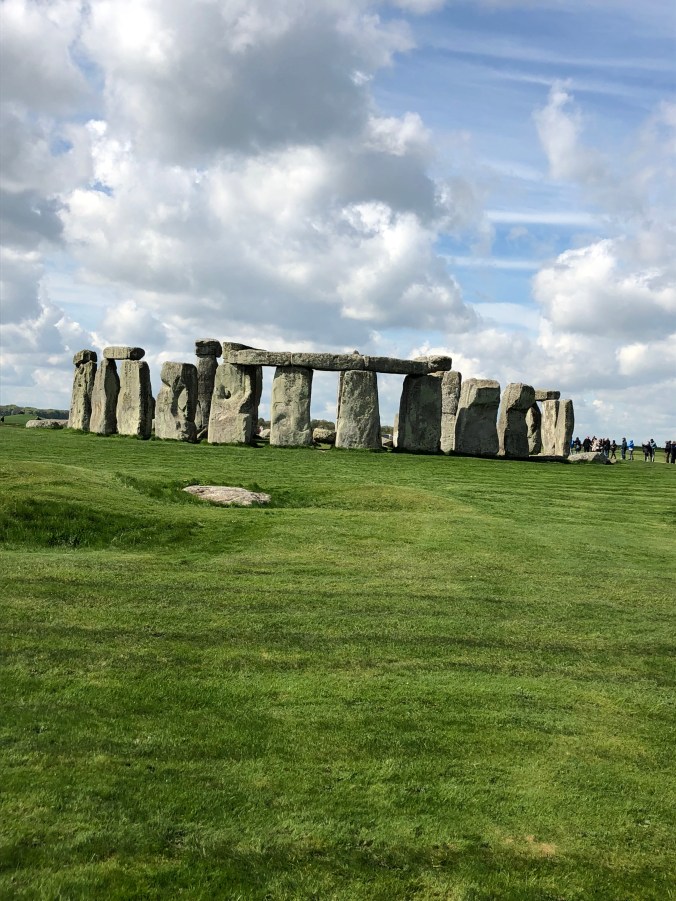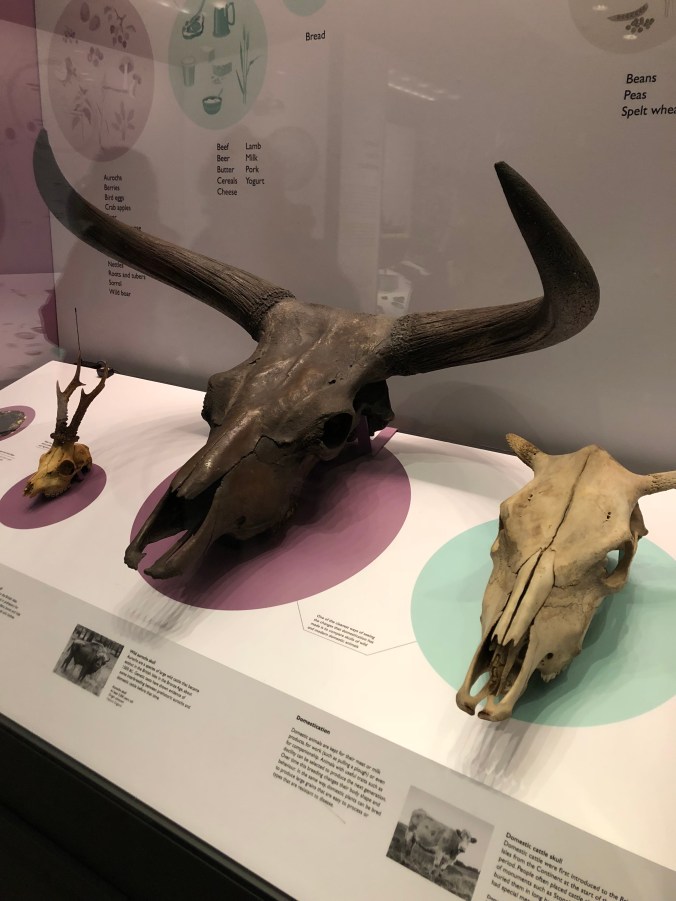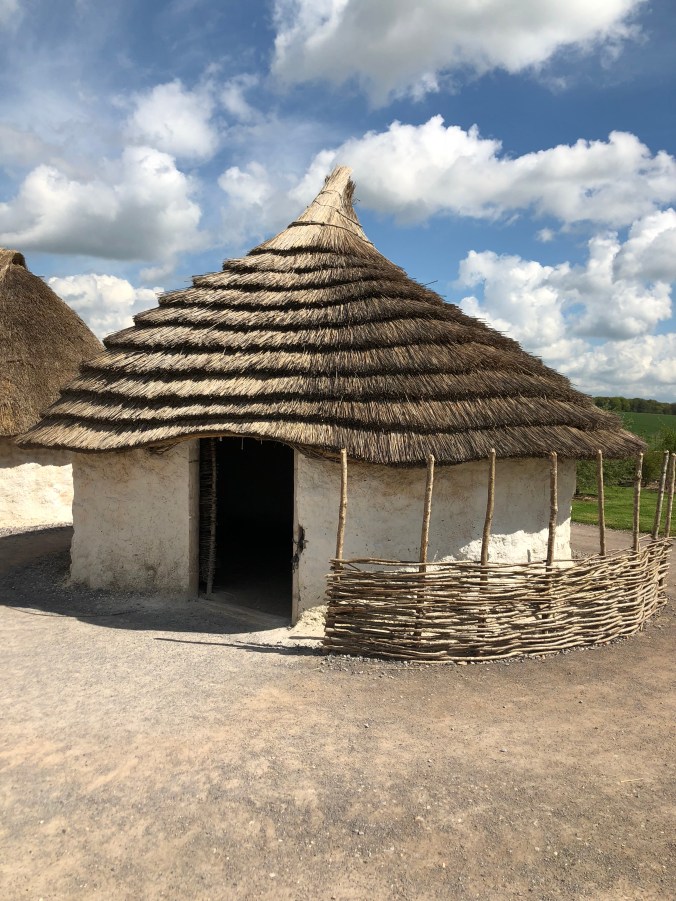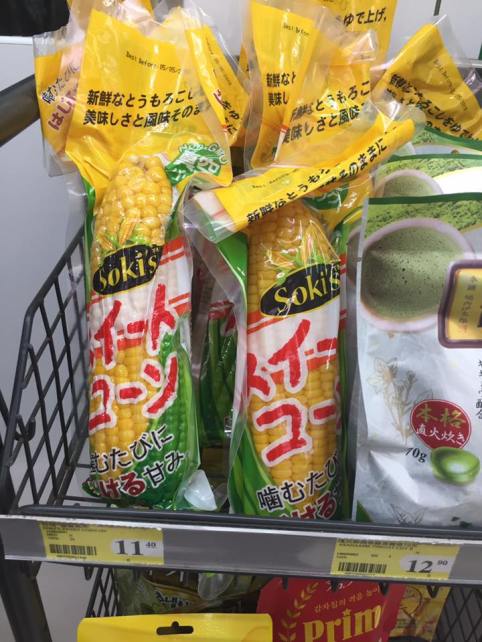
All photos are my own from a recent visit to the UK.
For the prehistoric people of the British Isles, the Neolithic Period (about 4000 to 2200 BCE) was a time of settling.
During the earlier Mesolithic (10,000 to 4,000 BCE) and for countless millennia before that, Britons had been semi-nomadic hunter-gatherers. Mushrooms and a variety of plants were harvested from the wild, many of them familiar to us today, such as nettle, crab apple, hazelnut, and sorrel. Fish were speared and various animals hunted, including waterfowl, boar, red deer and aurochs, the massive wild ancestor of modern cattle.

The skulls of an aurochs and a domestic cow side-by-side. Cattle were domesticated from aurochs in the Ancient Near East and brought from there to prehistoric Britain, where the giant ancestor species already existed in the wild. Wild aurochs were extinct in Britain by the second millennium BCE, but survived elsewhere in Europe until 1627 CE: which means that Shakespeare, Michelangelo and Martin Luther were contemporaries of giant Ice Age cows.
During the Neolithic, foods associated with a more settled lifestyle enter the human diet for the first time in Britain. Especially notable is the arrival of cattle and sheep, traded west over millennia from their original points of domestication. And while archaeological findings reveal that Britons were eating wheat traded from continental Europe as far back as 6000 BCE, it wasn’t until two thousand years later that they actually started growing it themselves. The first-known bread in Britain dates to 3500 BCE. No leavening agent was used; instead, coarsely ground barley and wheat were pressed together into a flat cake and roasted over an open fire. The roasted flour maza of the earliest Greeks might be an apt comparison. Perhaps Neolithic Britons would have enjoyed bread with other newfangled food trends everyone was talking about: beer, butter and cheese.

Food changes societies, and as prehistoric Britons transitioned from hunting and gathering to herding and agriculture, they began to live in permanent homes like the reconstructed one above, with a thatch roof and walls of wattle-and-daub, flexible woven branches covered in a layer of mud. Inside a home like this would be a single round chamber with a central fire-pit used for cooking and heating. The ceilings were high enough for smoke to dissipate safely without a smoke-hole in the roof (impractical anyway in the famously changeable English weather). Rising smoke was actually beneficial to the people inside, as it permeated the thatch roof and drove out any vermin that might be lurking there.

Examples of reconstructed Neolithic-era tools inside a wattle-and-daub home, including cooking implements and a fire-pit. Construction materials included woven plant matter, wood, hide, antlers, bone, and stone (especially flint and jet). Cooking vessels were made from fired pottery.

At the same time as these people were learning to raise cattle and sow wheat, and taking increasingly to a settled lifestyle instead of a nomadic one, they were dragging enormous stones to a place that would someday be known as Stonehenge. Today, the grassy, windswept hills around the stone formation look much the same as they did in prehistoric times, providing ample grazing area for herds of cattle. The presence of a natural stone or two may have inspired early humans to bring more of them, but we don’t know exactly why Stonehenge was constructed (leading theories include a tomb complex, a marketplace, a solar calendar, or some combination thereof. Or, you know, aliens). It was built up through successive waves between 3000 and 2000 BCE (the Great Pyramids of Egypt are around the same age, but only took a fraction of the building time).

Lacking the wheel (not to mention the forklift), Neolithic Britons may have transported the great stones to Stonehenge by rolling them across logs. How far away the rocks came from is still under debate, though some place their origin at Carn Menyn in Wales, nearly 200 miles away.
Some of our great churches and other monuments today have been under continuous use for a thousand years or more, but how many have been under continuous construction? Whatever impulse inspired the builders of Stonehenge, it continued to inspire them for centuries. Could that impulse have some connection to the shift to a settled lifestyle which occurred around the same time? Were the people who settled down to take advantage of new foods driven to create monuments like themselves: not transient but permanent, tied to a single place? We can never really know for certain. The food, words and wisdom of the Neolithic Britons has disappeared, but Stonehenge has remained.



 –
–

You must be logged in to post a comment.